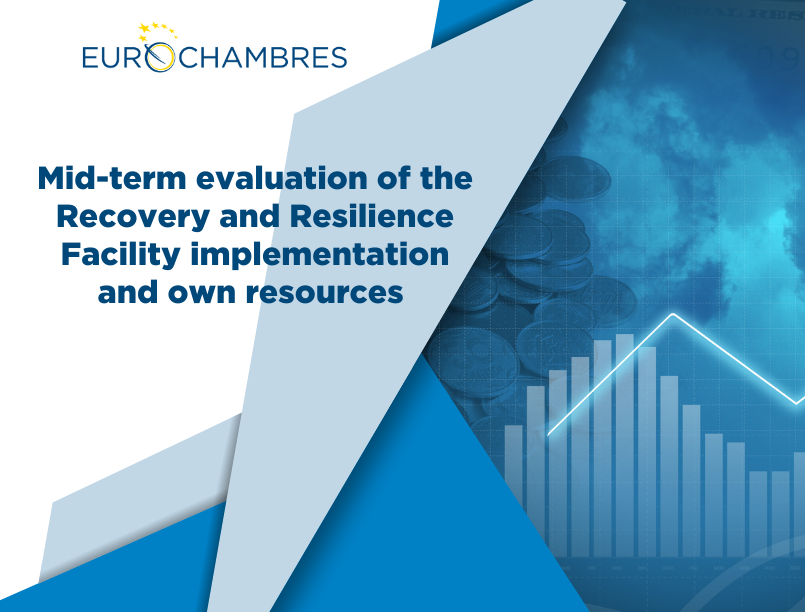Eurochambres Mid-term evaluation of the Recovery and Resilience Facility implementation and the next generation of own resources
Most chambers involved in the implementation of the Recovery and Resilience Facility (RRF) observe deficiencies in the absorption of funding at regional and local level. Excessive red tape and burdensome legislation continue to represent the main hurdles, together with the lack of information on available funding and technical assistance in implementing digital or green practices. Altogether these factors contribute to a disappointing situation that carries the risk to jeopardise the RRF objectives and, most importantly, failing in supporting the European economy and the business environment. The chamber network is also concerned with the set of new own resources that the European Commission proposed to repay the debt incurred under the NextGenerationEU scheme.
Executive summary
Established in February 2021, the RRF was proposed as the key instrument at the heart of the NextGenerationEU plan. However, its goal to combat the impact of the Covid-19 pandemic has suffered from unexpected new crises such as the war in Ukraine, the energy crisis, and upward inflationary pressure. All of this has weakened the competitive position of European businesses and increased the need for assistance and financial support.
In 2021 Eurochambres highlighted that the lack of effective business-friendly measures in national Recovery and Resilience Plans (RRPs) represented a major criticality not adequately tackled. Similarly, in a position published in May 2022 Eurochambres pointed out that chambers of commerce and industry must be involved in more collaborative and constructive dialogues to ensure the efficient management and monitoring of the national plans.
In this context, a mid-term evaluation of the RRF implementation in member states through the eyes of the chamber network and European businesses was necessary.
Based on a short survey among its members, Eurochambres positively notes that several chambers are involved in the implementation of national plans. While the absorption of RRF resources at national level appears to be efficient, most chambers responding to our consultation point out the difficulties of funding in reaching regional and local beneficiaries.
Among the factors limiting an efficient allocation of funding – especially to green and digital projects – excessive tape and burdensome legislation remain the main hurdles. Businesses also continue to lack information on available funding and technical assistance in implementing digital or green practices. Altogether these factors contribute to an overall disappointing situation that carries the risk to jeopardise the RRF objectives and, most importantly, failing in supporting the European business environment.
